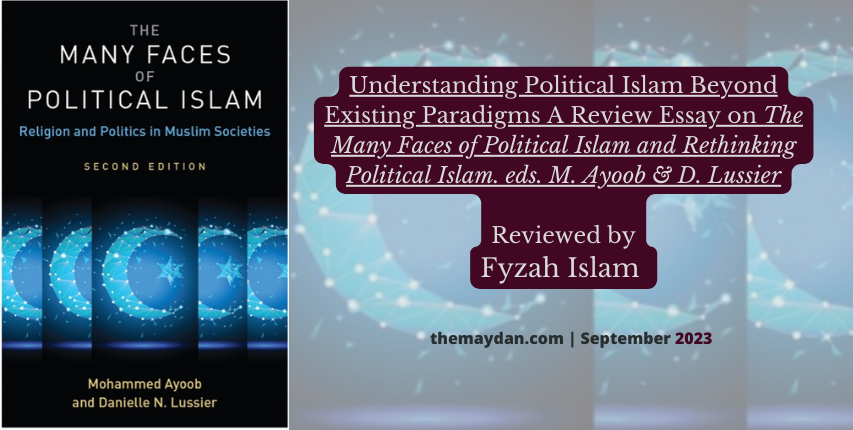
Over the last fifty years, Islam’s geopolitical presence has significantly expanded, allowing for expanded dialogue on the role of religion and the effects of Islam on the political stage. This has given rise to new academic fields, instituting a series of publications focusing on topics from the personal manifestation of the religion to how Islamic belief influences voting, political parties, and political leaders. Inadvertently, the vastness of Islam’s sociopolitical reach has created misinformation at each level, especially in the relationship between Islam, individuals, and institutions, a topic we explore further in this critique of The Many Faces of Political Islam – Religion and Politics in Muslim Societies. In addition to critiquing The Many Faces, this paper also discusses the impact of Rethinking Political Islam by Shadi Hamid and William McCant and What is Islam – The Importance of Being Islamic by Shahab Ahmed across this topic.
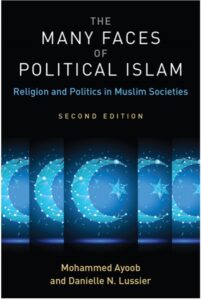
Mohammed Ayoob and Danielle N. Lussier’s work reframes definitions of political Islam to be more representative of diverse religiopolitical beliefs within institutions. As a second-edition publication in which Lussier was given complete editorial control, The Many Faces bridges gaps between academics looking to study political Islam and nonacademic readers interested in the topic. Lussier’s work encourages readers to look beyond Islam as a violent institution, highlighting that Islam is not unique in its capacity to influence politics and that its role must be evaluated against a myriad of other relevant factors in each region. This perspective emphasizes that different regions and demographics integrate religious politics in ways specific to individual cultural identities. Lussier’s account of political Islam presents a holistic movement affecting and effecting change globally. This style directly counters the presentation of political Islam in Rethinking Political Islam, which focuses on the impact of political Islam along the lights of nationalities, engagement, and ideological strength.
Political Islam is the driving force behind the emergence of many movements, such as the Muslim Brotherhood and Jamaat-e-Islam; it is also a “natural manifestation” of history and Islamic theological tradition (Mandaville 2014). Political Islam and Islamism are used interchangeably across The Many Faces; however, it is noteworthy that in more recent publications, Islamism is understood to focus predominantly on Islamic political parties like the Muslim Brotherhood or Ennahda, whereas political Islam concerns the role of all players – individual or organizational – in a political system (Cesari 2021). Given the global presence of Muslim-majority nations and religiopolitical groups, political Islam has “challenged government, policymakers, and analysts” across various issues, including foreign and domestic policy approaches and modernization (Esposito 2000). Especially in the years following 9/11, the intersection between Islam and sociopolitical endeavors has gained much traction.
“… the theory surrounding political Islam has typically maintained three perspectives – first, the nature and social tradition of Islamic states are unique; second, political Islam is a monolithic entity; and third, all renditions of this institution are violent.”
However nuanced, the theory surrounding political Islam has typically maintained three perspectives – first, the nature and social tradition of Islamic states are unique; second, political Islam is a monolithic entity; and third, all renditions of this institution are violent (Ayoob and Lussier 2020). The Many Faces presents an account advocating that Islam and policy have a balanced relationship, like all religions. The Many Faces begins with defining political Islam and dismantling prior representations of the subject. Lussier describes political Islam as a “broad spectrum of convictions by individuals, groups, and organizations that pursue political objectives.” Lussier notes that the connectivity of political Islam comes from the widespread use of idioms connecting Muslims internationally. These “broad spectrums” maintain Islam’s presence across the sociopolitical system as a form of socioeconomic and cultural reclamation.
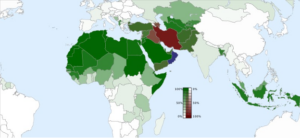
In What is Islam?, Shahab Ahmed centralizes his argument on the perspective that “[the] disciplinary vocabulary of modernity [on] how the world must be or as insists it to be,” has yielded an intellectually limited understanding of Islam in media, political, and academic arenas that broadly matches popular perspective (Ahmed 2015). Through looking at political Islam as a holistic phenomenon that does not limit itself at borders, Lussier actively combats existing binary views on political Islam “tell[ing] [researchers] very little about specific Islamist actors [and] how different Islamist actors relate to one another.” The layout of The Many Faces is the most significant contributor to the publication’s ability to break out of academic boundaries. Looking at chapter one, titled Defining Concepts, Demolishing Myth, Lussier focuses solely on existing assumptions about Islam and its presence in the current and historical geopolitical stage. By looking at the overarching assumptions impacting the global understanding of political Islam, Lussier successfully establishes that despite ‘superficial similarities,’ political priorities are specified to residential demographics, as in the case of other religiopolitical institutions. Both What is Islam and The Many Faces dismantle (and emphasize the importance of diverting from) a singular definition of Islam. Ahmed affirms that Islam is a multiethnic institution wherein the same concepts have multiple perspectives – he goes as far as to say that the Quran and other sources of Islamic jurisprudence are not representative of Islam; the practitioners define Islam. Where Ahmed’s book presents a radical argument wherein Islam is defined not by canon but through practice, Lussier uses more contemporary, real-world examples to dismantle orientalist definitions of political Islam. Lussier argues that any one-dimensional understanding of Islam’s religiopolitical presence forces academic analysis to “conclude that [Islamic political players] lie on one end or the other of the radical-to-moderate continuum.”
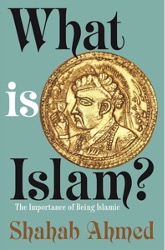
The essence of Lussier’s analysis lies in the communal nature of Islam and the idea that the social factors of the Muslim world create a system with varying shades of gray. Although events in one nation occur independently of another, religiopolitical movements often share root motivators. Ahmed argues that individual practitioners define Islam – despite his works connecting to the canonical foundation of the faith – his argument represents a future of political Islam in which, if religiosity is linked with “social organizations or political currents,” support may decrease, as in the case of Tunisia, Egypt, and Indonesia. By focusing on the overarching motivators and contributing factors to seemingly isolated, domestic movements, Lussier creates an analysis of political Islam respectful of cultural differences without creating unnecessary demographic divisions.
Comparatively, Rethinking Political Islam – shortened to Rethinking – individualizes the impact and presence of Islam in nations, engagement strategies, religion, ideology, and organization. The separated accounts of how Islam affects religiopolitical and sociopolitical facets of society lessen religion’s globalized magnitude across political systems. Although this individualization expands overall awareness of Islam’s significance in individual sociopolitical affairs, it does not answer any questions of how the actions of one organization or nationality influence the mentalities of a latter party. On a positive note, this individualization allows readers to understand a specific event or perspective without sifting through confusing layers of potential outside influences. Rethinking serves to “at a minimum, challenge the conventional wisdom of political Islam” by providing a collaborative publication that analyzes the political presence of Islam across each standpoint (Hamid and McCants 2017). Each item is carefully selected so the reader receives only relevant information. However, the publication’s shortcoming is that its zoomed-in analysis prevents the reader from seeing broader patterns within the demographics of political Islam. The lack of individualized research in The Many Faces oversaturates the reader, limiting overall comprehension. Yet despite this argument, the fragmented presentation of political Islam through the analysis of specific nations, engagement strategies, and ideological frameworks in Rethinking limits the book’s ability to create a general understanding of the future of political Islam.
Lussier’s efforts to limit the fractionalization of political Islam is a step in the right direction. Fractionalization within The Many Faces occurs as subheadings within the chapter; for instance, chapter two, titled Islam’s Multiple Voices, is then split into subsections reviewing historical platforms, colonialism, modernity, the ulama’s authority, and, among others, the religion’s proto-reformation. Lussier’s dedication to analyzing and expanding conversations of political Islam beyond existing binaries makes The Many Faces a valuable resource for all who aim to learn about Islam’s influence on the global political system.
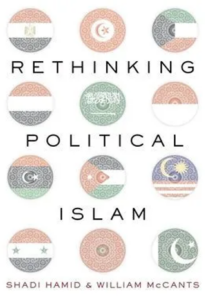
However, we would be remiss to skip over the fact that Lussier’s work has been criticized for a predominantly Sunni focus (Dunning 2021). Although less than 15% of Muslims are Shia, Shi’ism is the prevalent religious affiliation in Iran, is practiced across the Muslim world in varying percentages, and is the cornerstone of Hezbollah’s religious identity (Newman 2023). The divide between Shia and Sunni Muslims was significantly exasperated in the late 1970s with the Iranian Revolution and has since been exemplified in extremist political organizations such as Hezbollah and Hamas – two rival, geopolitically relevant platforms of political Islam (Knott and Francis 2016). Despite the legitimacy of concerns of an overly Sunni perspective, as an introduction to the holistic reach and impact of political Islam, Lussier does present accounts of Shia influences on political Islam, the rise of Shia ideology throughout the global political arena, and shortcomings limiting Shi’ism’s political trajectory.
A highly appreciated quality of The Many Faces is its ability to draw connections between each significant facet of political Islam, creating a cohesive storyline and piecing together how each event correlates. Certainly, there is value in reviewing political Islam in regional capacities, focusing on the intricacies of how Islamic theology and cultural norms influence local political landscapes; however, as in the case of Rethinking, this assumes that Islam’s political influence is not globalized. Where Rethinking focuses on specific instances and national events, The Many Faces looks at these events and situations to find joint and connective traits. Lussier writes, “Political Islam speaks the language of resistance to foreign domination” in the first chapter, and the same sentiment is carried in the book’s last chapter when reviewing the intersection between American policies and political Islam. The idea of political Islam as a language is an ever-present analogy here. The book starts with the concept of political Islam as a root language uniting ethnically diverse demographics, then explores the evolution of the language within each cultural institution and concludes with how the language reacts to the modern era and expectations for its linguistic future.
Although events in one nation occur independently of another, religiopolitical movements often share root motivators…The separated accounts of how Islam affects religiopolitical and sociopolitical facets of society lessen religion’s globalized magnitude across political systems.
Without understanding the overarching role of Islam in the globalized political arena, comprehending the political presence of the region in individual states creates gaps in analysis and risks skewed political and academic perspectives. Following a similar linguistic analogy, Rethinking separates the root language into relevant categories – countries, engagement, and ideology or organization – to provide analysis according to subcategories. Though such a breakdown enables a thorough understanding of the section most relevant to interests, it falls under the trap of carving Islam into convenient categories, limiting conversation. While Rethinking creates division among the various facets of political Islam, it provides a robust analysis of each fraction following an “inch wide, mile deep” mentality. Comparatively, The Many Faces maintains a “mile-wide, inch-deep” perspective. Inevitably, there is value in both forms of research, and both have their shortcomings as well. If the goal is to build a foundational understanding of political Islam with limited outside research, The Many Faces is an apt choice and deserves to be credited. However, if interests are more niche and require expert opinion on a selection of topics, Rethinking is far more appropriate.
Political Islam has been an established academic forum since the 1940s (Voll and Sonn 2010). However, Islam’s increasing geopolitical presence and expanding role in political movements demands greater cultural sensitivity in studying the phenomenon. Both titles successfully consider the cultural background and demographic influences when presenting findings. For any student or individual seeking a baseline understanding of political Islam and its contributions to the current geopolitical climate, The Many Faces of Political Islam presents an account that is easy to comprehend and one that emphasizes a holistic review of religious influences on governmental actors.
Fyzah Islam is a recent George Mason University’s Schar School of Policy and Government graduate. She holds a Bachelor’s degree in Government and International Politics, specializing in International Relations. Fyzah is pursuing her Master’s degree in Global Commerce Policy with a concentration in Global Development and Governance as part of the Schar School’s MA program. As a George Mason University Honors College student, Fyzah published a creative nonfiction piece titled “The One Without a Title.” She has been granted a prestigious public policy scholarship through the esteemed MyLLife Scholars Program, underscoring her commitment to positively impacting society through her research and policy work.

